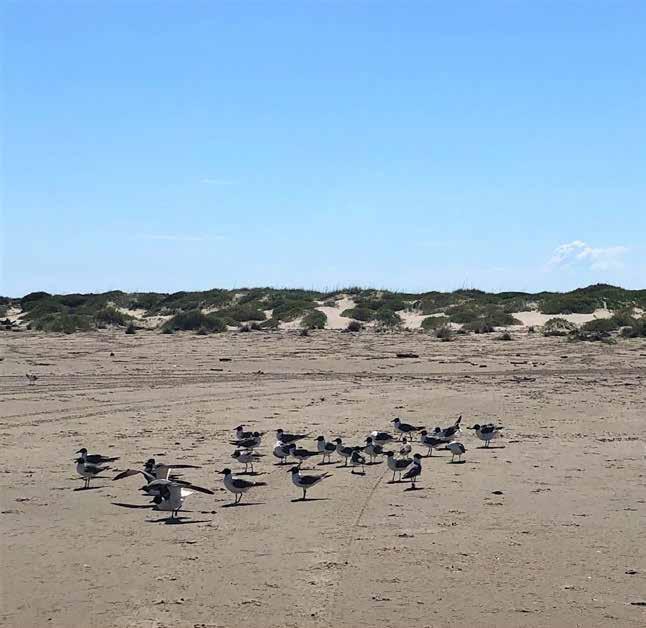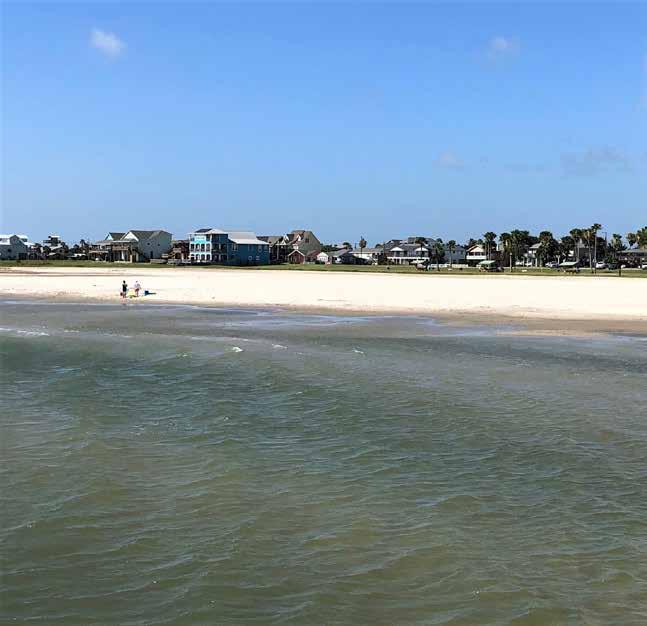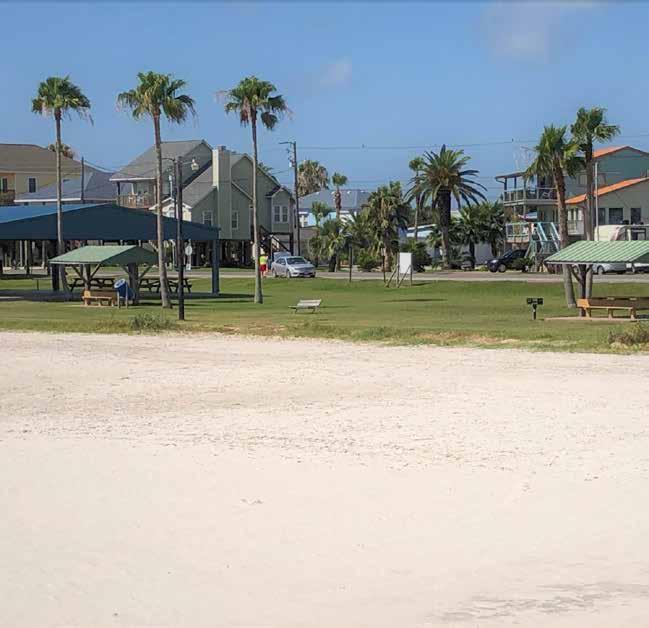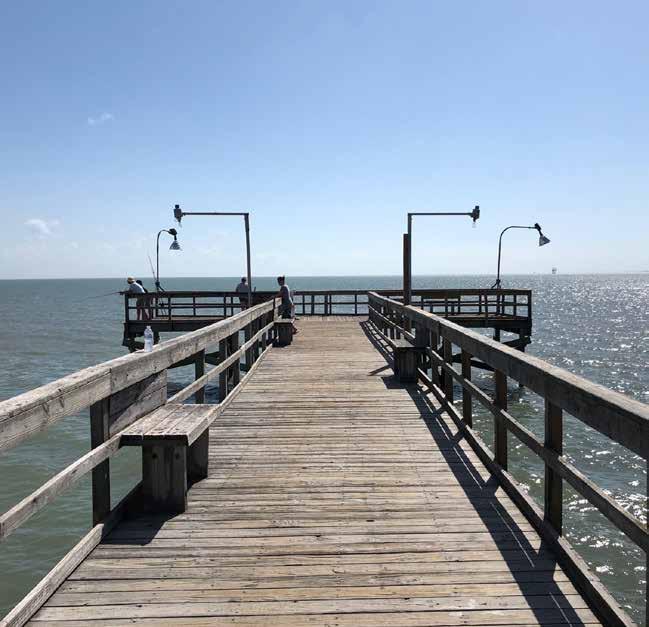
4 minute read
King Fisher Beach
Port O’Connor, Texas, United States
Nourishing a beach and protecting a coastline. What locals call “the best kept secret in Texas,” Port O’Connor houses the oldest marina in the state of Texas and is home to King Fisher Beach, a popular destination for swimming, boating, fishing, and birding. This beach is located near ecologically diverse habitat: large oyster reefs at Matagorda Bay; birding at Sundown Island, Texas’s most diverse colonial nesting bird island; and critical habitat for endangered species, such as piping plover (Charadrius melodus) and whooping cranes (Grus americana), at Matagorda Island. However, the beach, which protects neighborhoods, restaurants, lodging, and schools from coastal storms, is susceptible to storm surge, rising sea levels, and erosion. Additionally, the beach provides habitat for colonial nesting birds and sea grasses. Therefore, the U.S. Army Corps of Engineers (USACE)–Galveston District saw an opportunity for beneficial use when performing maintenance dredging of a nearby federal navigation channel. In 2017, the Galveston District placed around 58,305 cubic meters of dredged sediment on King Fisher Beach by pipeline dredge from RLB Contracting Inc. The project was complete within just 125 days from the awarded contract, adding real estate value to surrounding neighborhoods, increasing tourism, building habitat, and providing storm protection and added protection against rising sea levels.
Article cover: Sunset on the postconstruction beach. (Photo by David Paul Orr, USACE Galveston District)
Producing Efficiencies
The project team started by using collected physical and chemical data from the federal channel, determining sand grain size and chemical composition. Beach placement was strategic, long-term engineering with nature because wave surges moved the material towards the shore and combated the rate of erosion. By using the maintenance dredging cycle and placing sufficient material on the beach, the team was able to reduce the cost to all parties involved while adding storm protection to surrounding communities.

Using Natural Processes
A major challenge in placing dredged sediment along coastlines is combating wave energy and the rising sea level’s tendency to erode beaches. By using the composition of the material already on the beach, the project team worked with nature instead of against it to distribute the material in the littoral zone. Using similar material from the channel also created habitat that was already suitable for migrating and local shorebirds and the other species they depend on for sources of food.

Broadening Benefits
King Fisher Beach serves as a focal point for community celebrations such as the Fourth of July and Memorial Day. Restoring the beach protects this important local resource. Beach placement provides economic benefits as it reduces the cost of maintenance of federal placement areas, adds real estate value, and increases both recreation and tourism. Beach nourishment increases storm protection to surrounding communities and restores eroded habitat for coastal species. And the nearly 60,000 cubic meters of material dredged as a part of normal maintenance operations will now stay in the local ecosystem and reduce the rate of future erosion.

Promoting Collaboration
The Galveston District partnered with the U.S. Fish and Wildlife Service, the Port O’Connor Chamber of Commerce, and the Calhoun County Parks Board. The collaboration and the planning of this project ensured that placement would occur during periods less likely to impact both the economy and important nesting bird species. The result was a well-planned dredging project and a nourished, restored beach ready for tourists and local species alike.









